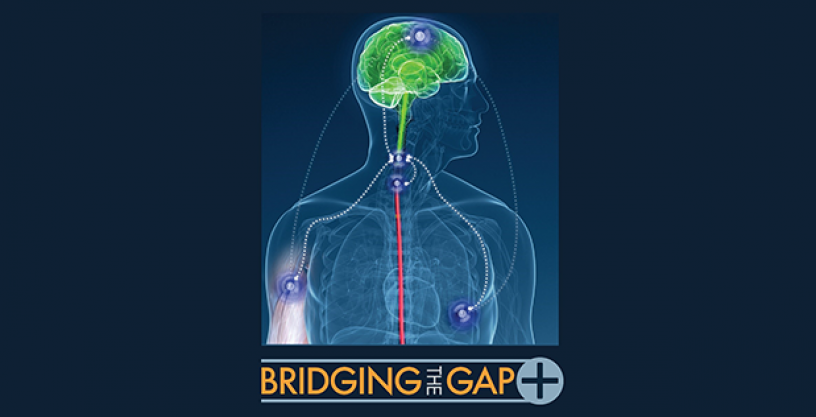
BG+ program performers to develop new approaches by integrating injury stabilization, regenerative therapy, and functional restoration
Nov 9, 2020
Spinal cord injury (SCI) is of significant concern to the Department of Defense. Of the 337,000 Americans with serious SCIs, approximately 44,000 are veterans, with 11,000 new injuries occurring each year.1 SCI is a complex condition – the injured often face lifelong paralysis and increased long-term morbidity due to factors such as sepsis and autonomic nervous system dysfunction. While considerable research efforts have been devoted toward restorative and therapeutic technologies to SCIs, significant challenges remain.
DARPA’s Bridging the Gap Plus (BG+) program aims to develop new approaches to treating SCI by integrating injury stabilization, regenerative therapy, and functional restoration. Today, DARPA announced the award of contracts to the University of California-Davis, Johns Hopkins University, and the University of Pittsburgh to advance this crucial work. Multidisciplinary teams at each of these universities are tasked with developing systems of implantable, adaptive devices that aim to reduce injury effects during early phases of SCI, and potentially restore function during the later chronic phase.
“The BG+ program looks to create opportunities to provide novel treatment approaches immediately after injury,” noted Dr. Al Emondi, BG+ program manager. “Systems will consist of active devices performing real-time biomarker monitoring and intervention to stabilize and, where possible, rebuild the neural communications pathways at the site of injury, providing the clinician with previously unavailable diagnostic information for automated or clinician-directed interventions.”
The BG+ teams will use a range of technologies and strategies to address these significant challenges, including ultrasound, infrared spectroscopy, stem cell implantation, targeted electrical and ultrasound stimulation, and novel surgical and machine learning techniques:
- The University of California Davis team (Prof. Karen Moxon) is developing new treatment approaches for early SCI stages that include a hemodynamic control system and neural stem cells within a novel 3D-printed biomimetic biodegradable scaffold.
- The University of Pittsburgh team (Prof. Changfeng Tai) is working on an implantable integrated device that can be wirelessly controlled and wirelessly charged to restore bladder, bowel, and sexual function in chronic condition SCI patients.
- The Johns Hopkins University team (Prof. Nicholas Theodore) is developing a system which consists of two implants: a multimodal, multi-functional spinal cord implant and an acute cerebrospinal fluid management implant for early injury stages.
The final program deliverables aim to adapt to changes in injury profile over time, inform new standards of care for the acute effects of injury, minimize secondary complications, and address the long-term dysfunctions. At the conclusion of the program, and in coordination with the FDA, teams will be required to validate their technologies in humans to provide useable tools for clinicians and patients.
“With the help of these skilled teams, we are confident we will be able to meet the bold goals outlined for the BG+ program, and help to provide much-needed treatments for those warfighters living with SCIs,” added Emondi.
Additional details of the program schedule and metrics are available in the 2019 broad agency announcement at https://www.grants.gov/view-opportunity.html?oppId=322019.
# # #
Media with inquiries should contact DARPA Public Affairs at outreach@darpa.mil
Associated images posted on www.darpa.mil and video posted at www.youtube.com/darpatv may be reused according to the terms of the DARPA User Agreement, available here: http://go.usa.gov/cuTXR.
Tweet @darpa
